Let’s say you get your hands on Kip’s time machine from Napoleon Dynamite. You insert the proper number of crystals but instead of going back to the halcyon year of ’82, you choose to travel 500 years back in time to the banks of the Delaware River for some casts. The river would undoubtedly churn with fish — stripers, shad, river herring, bowfin, mighty Atlantic sturgeon. In a slow glide, a pod of risers casually sips hatching insects. You approach, make a cast, and immediately hook what feels like a decent fish. Thirty seconds later — and not a second more — you land a 14-inch fallfish. You cast again. Same result. Then you realize that all of the risers are fallfish. You reel up and immediately want to return home to the more trout-filled present.
The truth is, at the time of the Lenni Lenape, the mainstem Delaware’s dominant, native insect predator was most certainly Semotilus corporalis, the fallfish. Why no trout? To begin with, browns and rainbows weren’t even introduced to the Catskills until the second half of the 19th century. Yes, native brook trout were present, but most likely found far upriver in the shaded and cooler headwaters of the East and West Branch, or in coldwater tributaries like the Beaverkill, Neversink, and Brodhead. Other gamefish, including smallmouth, walleye, and muskie, were all later introduced. This means that for millennia, the storied mainstem Delaware, for better or worse, was a fallfish river.
Not to be confused with the related, but smaller, creek chub, fallfish are among North America’s larger members of the minnow family, reaching lengths of nearly 20 inches (the Colorado pikeminnow, the true giant of the family, historically grew to an astounding six feet and weighing 80 pounds). Fallfish live in rivers, streams, and lakes from Virginia to Maine, ranging into southern Ontario, Quebec, and New Brunswick. As fry, they eat zooplankton, but then transition to aquatic insects, fish eggs, and other fish. So, a native fish, living its best native fish life. What’s wrong with that?
Among anglers, fallfish almost universally disappoint. Their biggest offense is rising like trout and tricking you into casting for them. Any similarity ends with the hookset. After a languid head shake, followed by an anemic run that may pull inches, not yards, off your reel, they yield to your awaiting hand with little fanfare. Twist the fly free, and they often gurgle at you before the release. In several decades of fishing the Delaware, I have never heard anyone excitedly exclaim: “Oh wow! A fallfish!” This may be why a friend calls them failure-fish.
Last week, I worked a bank-sipper for almost an hour, its selectivity convincing me it could only be a decent-sized wild brown. Caddis bounced around, but the fish had locked into eating minutia in the surface film. Half a dozen fly changes later, it finally took a size 20 Griffith’s Gnat. I set in triumph. Then: sluggish headshakes, and I knew I had been duped. I stripped the fish in, not even doing it the honor of playing it off the reel.
Then I saw it. Yep, a heavy failure-fish of about 16 inches. I stripped it closer and could now see it was a male in full spawning colors. Its cheeks had ripened to a rich purple — almost the color of blueberry pie. Its shoulders lustered deep bronze. The lattice of each individual scale resembled living gyotaku. And the top of its head was lined with rows and rows of small white nodules called “nuptial tubercles.” Made from keratin, the same structural protein as hair, fingernails, and hooves, tubercles are used to stimulate females into spawning. The healthiest males have the most tubercles.
Then I thought of the large fallfish nests constructed of river rocks I sometimes saw in slower Delaware pools. Each rock, individually curated by the male, is moved by mouth. Only smooth, roundish ones about the size of a silver dollar are selected. Some nests measure an impressive three feet across and two feet tall, consisting of hundreds of similar-sized rocks. Spawning occurs in a small pit dug near the top of the mound — a sort of fallfish penthouse.
So, a male fallfish, with its dramatic color-sense, dedication to fitness, and architectural style is nothing short of a renaissance fish. A native species perfectly adapted for its river environment and worthy of respect. Shame on me for believing otherwise. Failure-fish? Not a chance. More like fabulous-fish — maybe fab-fish for short.
As Kip says: Peace out.




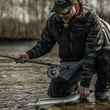



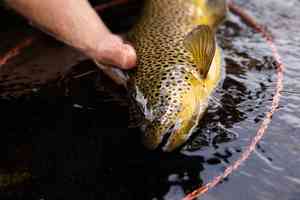






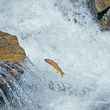






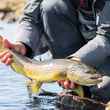
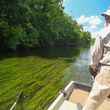
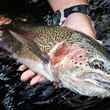






Comments